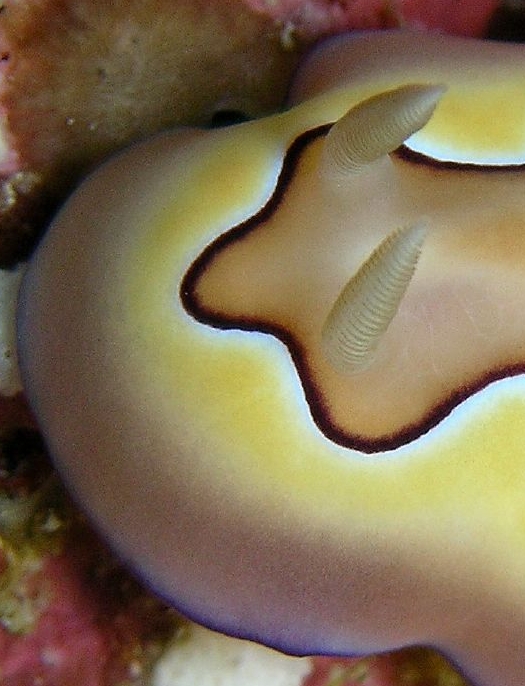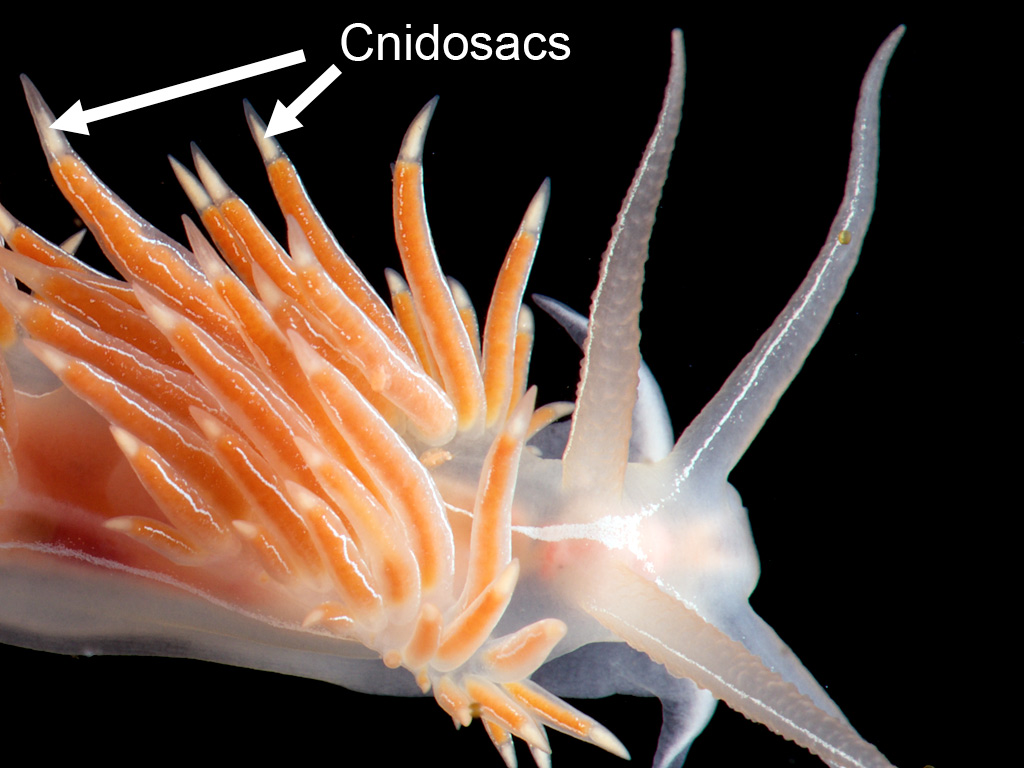|
Luisella
''Luisella'' is a monotypic genus of sea slugs, specifically aeolid nudibranchs, marine gastropod molluscs in the family Samlidae.Korshunova, T.; Martynov, A.; Bakken, T.; Evertsen, J.; Fletcher, K.; Mudianta, W.; Saito, H.; Lundin, K.; Schrödl, M.; Picton, B. (2017)Polyphyly of the traditional family Flabellinidae affects a major group of Nudibranchia: aeolidacean taxonomic reassessment with descriptions of several new families, genera, and species (Mollusca, Gastropoda).ZooKeys. 717: 1-139. Its one species is ''Luisella babai''. Etymology The specific epithet ''babai'' honors the Japanese malacologist Kikutaro Baba.DORIS - Données d'Observations pour la Reconnaissance et l'Identification de la faune et la flore Subaquatiques ...
|
Samlidae
Samlidae is a taxonomic family of brightly coloured sea slugs, specifically nudibranchs, marine gastropod mollusks. Genera and species Genera within the family Samlidae include:Picton, B. (2017)Samlidae Korshunova, Martynov, Bakken, Evertsen, Fletcher, Mudianta, Saito, Lundin, Schrödl & Picton, 2017.In: MolluscaBase (2017). Accessed on 2018-01-12. * ''Luisella ''Luisella'' is a monotypic genus of sea slugs, specifically aeolid nudibranchs, marine gastropod molluscs in the family Samlidae.Korshunova, T.; Martynov, A.; Bakken, T.; Evertsen, J.; Fletcher, K.; Mudianta, W.; Saito, H.; Lundin, K.; Schrödl ...'' Korshunova, Martynov, Bakken, Evertsen, Fletcher, Mudianta, Saito, Lundin, Schrödl & Picton, 2017 * '' Samla'' Bergh, 1900 References {{Taxonbar, from=Q44462124 Fionoidea ... [...More Info...] [...Related Items...] OR: [Wikipedia] [Google] [Baidu] |
Animal
Animals are multicellular, eukaryotic organisms in the Biology, biological Kingdom (biology), kingdom Animalia (). With few exceptions, animals heterotroph, consume organic material, Cellular respiration#Aerobic respiration, breathe oxygen, have myocytes and are motility, able to move, can reproduce sexually, and grow from a hollow sphere of Cell (biology), cells, the blastula, during embryonic development. Animals form a clade, meaning that they arose from a single common ancestor. Over 1.5 million extant taxon, living animal species have been species description, described, of which around 1.05 million are insects, over 85,000 are molluscs, and around 65,000 are vertebrates. It has been estimated there are as many as 7.77 million animal species on Earth. Animal body lengths range from to . They have complex ecologies and biological interaction, interactions with each other and their environments, forming intricate food webs. The scientific study of animals is known as ... [...More Info...] [...Related Items...] OR: [Wikipedia] [Google] [Baidu] |
Mollusc
Mollusca is a phylum of protostome, protostomic invertebrate animals, whose members are known as molluscs or mollusks (). Around 76,000 extant taxon, extant species of molluscs are recognized, making it the second-largest animal phylum after Arthropoda. The number of additional fossil species is estimated between 60,000 and 100,000, and the proportion of undescribed species is very high. Many taxa remain poorly studied. Molluscs are the largest marine biology, marine phylum, comprising about 23% of all the named marine organisms. They are highly diverse, not just in size and anatomical structure, but also in behaviour and habitat, as numerous groups are freshwater mollusc, freshwater and even terrestrial molluscs, terrestrial species. The phylum is typically divided into 7 or 8 taxonomy (biology), taxonomic class (biology), classes, of which two are entirely extinct. Cephalopod molluscs, such as squid, cuttlefish, and octopuses, are among the most neurobiology, neurologi ... [...More Info...] [...Related Items...] OR: [Wikipedia] [Google] [Baidu] |
Hydroids
Hydroids are a life stage for most animals of the class Hydrozoa, small predators related to jellyfish. Some hydroids such as the freshwater '' Hydra'' are solitary, with the polyp attached directly to the substrate. When these produce buds, they become detached and grow on as new individuals. The majority of hydroids are colonial. The original polyp is anchored to a solid substrate and forms a bud which remains attached to its parent. This in turn buds and in this way a stem is formed. The arrangement of polyps and the branching of the stem is characteristic of the species. Some species have the polyps budding directly off the stolon which roots the colony. The polyps are connected by epidermis which surrounds a gastrovascular cavity. The epidermis secretes a chitinous skeleton which supports the stem and in some hydroids, the skeleton extends into a cup shape surrounding the polyp. Most of the polyps are gastrozooids or feeding polyps, but some are specialised reproduc ... [...More Info...] [...Related Items...] OR: [Wikipedia] [Google] [Baidu] |
Veliger
A veliger is the planktonic larva of many kinds of sea snails and freshwater snails, as well as most bivalve molluscs (clams) and tusk shells. Description The veliger is the characteristic larva of the gastropod, bivalve and scaphopod taxonomic classes. It is produced following either the embryonic or trochophore larval stage of development. In bivalves the veliger is sometimes referred to as a D-stage (early in its development) or pediveliger (late in its development) larva. This stage in the life history of these groups is a free-living planktonic organism; this mode of life potentially enhances dispersal to new regions far removed from the adult mollusks that produced the larvae. The general structure of the veliger includes a shell that surrounds the visceral organs of the larva (e.g., digestive tract, much of the nervous system, excretory organs) and a ciliated wikt:velum#English, velum that extends beyond the shell as a single or multi-lobed structure used for swimming ... [...More Info...] [...Related Items...] OR: [Wikipedia] [Google] [Baidu] |
Hermaphrodite
A hermaphrodite () is a sexually reproducing organism that produces both male and female gametes. Animal species in which individuals are either male or female are gonochoric, which is the opposite of hermaphroditic. The individuals of many taxonomic groups of animals, primarily invertebrates, are hermaphrodites, capable of producing viable gametes of both sexes. In the great majority of tunicates, mollusks, and earthworms, hermaphroditism is a normal condition, enabling a form of sexual reproduction in which either partner can act as the female or male. Hermaphroditism is also found in some fish species, but is rare in other vertebrate groups. Most hermaphroditic species exhibit some degree of self-fertilization. The distribution of self-fertilization rates among animals is similar to that of plants, suggesting that similar pressures are operating to direct the evolution of selfing in animals and plants. A rough estimate of the number of hermaphroditic animal species ... [...More Info...] [...Related Items...] OR: [Wikipedia] [Google] [Baidu] |
Samla Bicolor
''Samla bicolor'' is a species of sea slug, an aeolid nudibranch, a marine heterobranch mollusc in the family Samlidae.Rosenberg, G. (2015)''Flabellina bicolor'' (Kelaart, 1858).In: MolluscaBase (2015). Accessed through: World Register of Marine Species on 2015-10-25 Distribution This species was described from Ceylon. It is widely distributed in the Indo-Pacific region.Rudman, W.B., 1999 (February 23''Flabellina bicolor'' (Kelaart, 1858). n/nowiki> Sea Slug Forum. Australian Museum, Sydney. In Hawaii it can be commonly found in Big Island, Maui, Oahu, Niihau, Laysan, Midway and Kure. Animals from different regions show subtle differences in coloration and in the shape of the oral tentacles and may be members of a species complex In biology, a species complex is a group of closely related organisms that are so similar in appearance and other features that the boundaries between them are often unclear. The taxa in the complex may be able to hybridize readily with each oth ... [...More Info...] [...Related Items...] OR: [Wikipedia] [Google] [Baidu] |
Rhinophore
A rhinophore is one of a pair of Chemoreceptor, chemosensory club-shaped, rod-shaped or ear-like structures which are the most prominent part of the external head anatomy in sea slugs, Marine (ocean), marine gastropod opisthobranch mollusks such as the nudibranchs, sea hares (Aplysiomorpha), and sap-sucking sea slugs (Sacoglossa). Etymology The name relates to the rhinophore's function as an organ of "smell". ''Rhino-'' means nose from Ancient Greek ῥίς ''rhis'' and from its genitive ῥινός ''rhinos''. "Phore" means "to bear" from Neo-Latin ''-phorus'' and from Greek -phoros (φορος) "bearing", a derivative of ''phérein'' (φέρειν). Function Rhinophores are scent or taste receptors, also known as Chemoreceptor, chemosensory organs situated on the dorsal surface of the head. They are primarily used for distance chemoreception and rheoreception (response to water current). The "scents" detected by rhinophores are chemicals dissolved in the sea water. The ... [...More Info...] [...Related Items...] OR: [Wikipedia] [Google] [Baidu] |
Cerata
:''The tortrix moth genus ''Cerata'' is considered a junior synonym of ''Cydia (genus), Cydia. Cerata, singular ceras, are anatomical structures found externally in nudibranch sea slugs, especially in aeolid nudibranchs, marine animal, marine opisthobranch gastropod mollusks in the clade Aeolidida. The word ceras comes from the Ancient Greek language, Greek word "κέρας", meaning "horn", a reference to the shape of these structures. Cerata are dorsum (biology), dorsal and lateral outgrowths on the upper surfaces of the body of these nudibranchs. Function Cerata greatly extend the surface area of nudibranchs and aid in aquatic respiration, respiration, the process of gas exchange for metabolic use. Cerata are also used, in some cases, for attack and defense. In many Aeolidida, aeolid nudibranchs, the digestive system extends into the cerata. These nudibranchs eat stinging celled animals (Cnidarians) such as sea anemone, anemones, hydrozoa, hydroids and sea fans or Portuguese ... [...More Info...] [...Related Items...] OR: [Wikipedia] [Google] [Baidu] |
Senegal
Senegal, officially the Republic of Senegal, is the westernmost country in West Africa, situated on the Atlantic Ocean coastline. It borders Mauritania to Mauritania–Senegal border, the north, Mali to Mali–Senegal border, the east, Guinea to Guinea–Senegal border, the southeast and Guinea-Bissau to Guinea-Bissau–Senegal border, the southwest. Senegal nearly surrounds The Gambia, a country occupying a narrow sliver of land along the banks of the Gambia River, which separates Senegal's southern region of Casamance from the rest of the country. It also shares a maritime border with Cape Verde. Senegal's capital is Dakar. Senegal is the westernmost country in the mainland of the Old World, or Afro-Eurasia. It owes its name to the Senegal River, which borders it to the east and north. The climate is typically Sahelian, though there is a wet season, rainy season. Senegal covers a land area of almost and has a population of around 18 million. The state is a Presidential system ... [...More Info...] [...Related Items...] OR: [Wikipedia] [Google] [Baidu] |
Portugal
Portugal, officially the Portuguese Republic, is a country on the Iberian Peninsula in Southwestern Europe. Featuring Cabo da Roca, the westernmost point in continental Europe, Portugal borders Spain to its north and east, with which it shares Portugal-Spain border, the longest uninterrupted border in the European Union; to the south and the west is the North Atlantic Ocean; and to the west and southwest lie the Macaronesia, Macaronesian archipelagos of the Azores and Madeira, which are the two Autonomous Regions of Portugal, autonomous regions of Portugal. Lisbon is the Capital city, capital and List of largest cities in Portugal, largest city, followed by Porto, which is the only other Metropolitan areas in Portugal, metropolitan area. The western Iberian Peninsula has been continuously inhabited since Prehistoric Iberia, prehistoric times, with the earliest signs of Human settlement, settlement dating to 5500 BC. Celts, Celtic and List of the Pre-Roman peoples of the Iberia ... [...More Info...] [...Related Items...] OR: [Wikipedia] [Google] [Baidu] |
Spain
Spain, or the Kingdom of Spain, is a country in Southern Europe, Southern and Western Europe with territories in North Africa. Featuring the Punta de Tarifa, southernmost point of continental Europe, it is the largest country in Southern Europe and the fourth-most populous European Union member state. Spanning across the majority of the Iberian Peninsula, its territory also includes the Canary Islands, in the Eastern Atlantic Ocean, the Balearic Islands, in the Western Mediterranean Sea, and the Autonomous communities of Spain#Autonomous cities, autonomous cities of Ceuta and Melilla, in mainland Africa. Peninsular Spain is bordered to the north by France, Andorra, and the Bay of Biscay; to the east and south by the Mediterranean Sea and Gibraltar; and to the west by Portugal and the Atlantic Ocean. Spain's capital and List of largest cities in Spain, largest city is Madrid, and other major List of metropolitan areas in Spain, urban areas include Barcelona, Valencia, Seville, ... [...More Info...] [...Related Items...] OR: [Wikipedia] [Google] [Baidu] |






